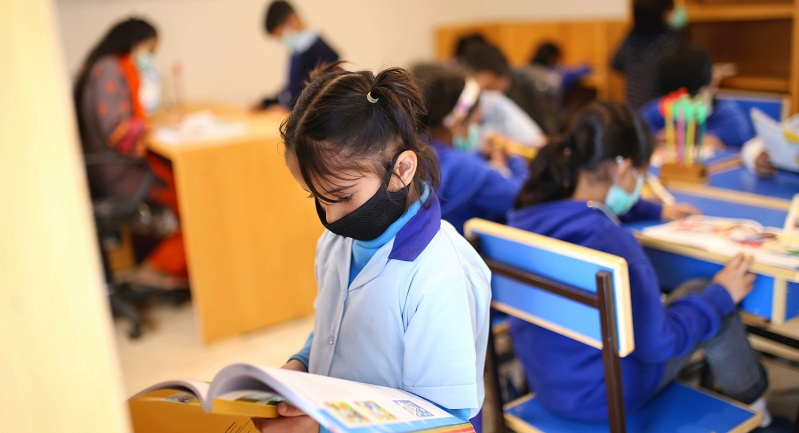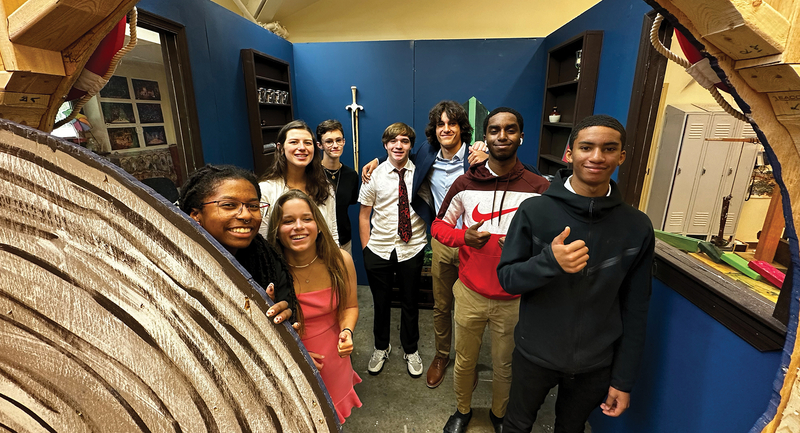I was in 3rd grade when I first recorded my goal of becoming a math teacher. I spent years envisioning how I was going to change my students’ experience with math. Those visions fueled my motivation until I was given the keys to my own classroom. Once there, I envisioned engaging, joyful learning, which drove my motivation to prep, teach, and grade. Yet, one of my biggest frustrations that first year was watching my teaching efforts stalled by a lack of student motivation. Students just weren’t sure how to feel about math. I decided, after much frustration, to focus my efforts on cracking the student motivation code.
It’s been over 20 years since then; I’ve taught nearly all K-12 grades, started new schools, and reformed existing schools. Wherever I go, teachers are eager to discover the secrets to the brain’s motivational systems. I can’t count the number of times I’ve heard a colleague or parent say, “They are just not a motivated student!” The danger in that kind of statement is two-fold. Decades of research show that low teacher expectations negatively impact student achievement (Rosenthal et al., 1968; Rubie-Davies et al., 2016). Using deficit language and labeling a student as "unmotivated" leads to lower teacher expectations, which can harm that student’s learning potential.
Labels like this are also neurobiologically inaccurate. There is no genetic marker for “highly motivated student.” Motivational urges come and go and can change faster than your mood. The idea of a ‘motivated learner’ or an ‘unmotivated learner’ is a dangerous myth that feeds inequities and the marginalization of certain students. Seemingly insignificant steps, such as how we prime our students for a learning activity, the level of autonomy we give them, and the ratio of risk-to-reward built into the task all affect student motivation.
To remove the guesswork, it’s important to understand the driving forces that influence motivational urges. With that knowledge, educators can activate the motivational systems in students’ brains with more consistency and ease.
The “Driving” Forces of Student Motivation
Have you ever tried to drive your car with the parking brake on? You might press harder on the accelerator and curse the car for not responding. Then comes the moment of humble reflection: You realize why your efforts failed, release the brake, and drive to your destination. Good-intentioned teachers can have a similar experience when students remain idle to a teacher’s efforts to motivate them. A closer look often reveals factors working in opposition—in the same way a parking brake will halt movement.
To pave the way for deeper learning, we can follow three steps to accelerate student motivation:
1) Release the parking brake by creating systems, environments, and relationships to reduce demotivators.
2) Step on the accelerator by activating the brain’s short-term motivators—curiosity, anticipation, and relevance.
3) Get into the right gear by designing learning around students’ unique, developmental drivers (the long-term motivators that shift as we age).
Step One: Reduce Demotivators
Efforts to motivate students won’t work when there are various demotivating factors around.
Some demotivators are rooted in systemic inequities, such as within school policies around grading, tracking, and discipline. These structures can leave students feeling as though their efforts don’t matter because the system is designed for them to fail.
Other demotivators can be rooted in a student’s classroom experience. A student who has historically done poorly in math may enter your math classroom already feeling hopeless. The first sign of a number line can trigger memories of past monotonous instruction, sending motivational levels plummeting. Students who sense their teacher lacks high expectations for them (i.e. being placed in the “low group” or remedial class, or the absence of challenging learning goals) will be less motivated, thinking, “If my teacher doesn’t believe in me, why should I try?” These types of experiences trigger memories of hopelessness, which is a deeply unmotivating state (Marques et al., 2015).
Finally, factors unique to each student can affect motivation. Some, like fatigue from poor sleep, sickness, or acute stress, have a short lifespan (Shan et al., 2016). Other factors, like trauma, can have a more lasting impact (Maier et al., 2016).
Why do all these factors make motivation so difficult? The stressors, distractions, or emotions divert the brain’s resources away from learning to focus on the body’s immediate physical, emotional, and social needs.
The first step to countering the effects of student demotivators is to create systems, policies, teaching habits, and relationships that minimize these demotivators. Does your school’s grading system allow space for thinking, errors, and the messy work of learning, or is it based on compliance to complete tasks perfectly for a grade? As a school, start by eliminating ability grouping and tracking systems, recognizing that all students can learn at high levels.
In your classroom, learn about the experiences your students have had that shape their identity as a learner. One insightful activity I often share when working with schools is to have students write a letter to a specific subject, or school in general (Dear Science, …) and then let students express that relationship by personifying the subject. Listen to their stories, and then act authentically to reduce the barriers to motivation and deeper learning.
Step Two: Accelerate Short-Term Motivators
Most teachers have some students walk into their classroom unmotivated to learn certain subjects, like math or history. The good news is that the brain has a few hard-wired motivational states that give an instant boost to the brain: curiosity, anticipation, and relevance. When a learner is in one of these biological states, the brain releases a cocktail of neurochemicals (such as dopamine, norepinephrine, and cortisol) that activate the motivation and learning systems of the brain (Corbett et al., 2017). These factors take place regardless of age, culture, or subject matter.
Curiosity
Humans are inherently curious. Curiosity prompts a surge of dopamine—the neurotransmitter most associated with motivation—as the brain searches for answers and meaning (Lloyd et al., 2015). Supporting students’ natural curiosity can be challenging in an education environment consumed with standards and assessments. Teachers who find ways to spark curiosity reap the benefits of better student learning. How do they do it? Here are a few ideas:
Make the requirements (or the mundane) more fun. One school I taught at required teachers to post a learning objective on the board. I rephrased the objective as a question or mystery for us to solve that day. Students couldn’t wait for the lesson to begin and were already thinking before the bell rang.
Find a prop that will increase curiosity. For example, I would place a giant pile of cotton balls in the center of the room on the day we would explore (and build) different cloud formations. Students were curious about the purpose of the cotton balls and eager to jump into the learning task.
Try a real-life scenario that connects to the lesson. To introduce “order of operations” in math class, I greeted my students at the door wearing clothes in the wrong order (ie. socks over my shoes, etc.). Their brains searched for the connection to our lesson the moment they saw me.
A word of caution: Many teachers have discovered that overuse of the same curiosity-building strategy loses its impact over time. This is because the brain desensitizes to dopamine. This explains why rewards are a less effective strategy. A sticker might work to motivate a kindergartner, but by 3rd grade, they're looking for a toy in your treasure box. A pizza party might get 6th graders motivated, but by high school, you'll need a full carnival. Diversifying your strategies to prompt a state of curiosity will keep students motivated without needing rewards.
Anticipation
Want students to count down the minutes until your next class? One strategy is to end each lesson with a teaser for the next day: "I can't wait to see you all tomorrow. We'll be solving the mystery of why the grass is green and not pink." In my classroom, I designated a special area of one wall to be a “Sneak Preview” board. I’d draw a picture or leave a clue for an upcoming lesson. A simple “Make sure you’re here on Thursday” can sometimes even peak students’ anticipation for the next class.
A word of caution: The brain thrives with a healthy balance of predictability and uncertainty. If everything in a classroom is framed as, “You’ll just have to wait and see,” students’ stress levels may increase to unhealthy limits. This is especially true for students who already have elevated stress levels due to trauma, poverty, and feeling culturally marginalized. Provide safety within structures and traditions, and then sprinkle in novelty to boost student motivation.
Relevance
Most teachers already know that students are more motivated when the learning material is highly relevant. Wise teachers allow students to choose relevant reading material and design learning activities around students’ interests, culture, and current events. At the school I helped establish in Denmark, we used data on an issue the students care deeply about for a math lesson or study the prose of a popular song in English class.
A word of caution: An adolescent brain values immediate relevance over long-term relevance because the regions that see the long-term impacts of current choices are still developing. Statements like, “This will be very useful to know when (insert situation 10-15 years from now)” aren’t as helpful as connecting content to what is relevant to your students now.
These short-term motivators can jumpstart a student into a more motivated state. But these states don’t last forever. For long-lasting motivation, teachers will need to shift into one of the brain’s long-term drivers.
Want more resources to understand the science of motivation?
Step Three: Design Long-Term Motivators
As we go through different developmental phases, our driving motivators shift. In infancy, we are driven by a need for security and connection. A toddler is driven by a sense of autonomy.
Each development phase leading to adulthood has its own set of motivators. Wise teachers know what drives their age group of students. As students age, changing gears to meet their current developmental needs is crucial for optimizing motivation. Although each student develops on their own timeline, some trends can be seen within developmental phases.
Elementary school students are motivated by autonomy, identity, and power. You see the latter when you ask a kindergarten class to line up at the door. The stampede to be the “line leader” is evidence of these students’ desire for power. Class jobs, choice in reading material, and letting students pick which learning station to start at are a few examples of designing around these drivers.
Middle school students are highly motivated by a sense of belonging, affiliation, and being right (Burrow et al., 2011). You see the craving for belonging when a tween is crushed if they are not invited to a classmates’ birthday party. Schools that are in tune with these needs create systems that support these needs, instead of letting cliques be the norm. Dividing the school into houses or teams with colors, mascots, and cheers can quench students’ craving to belong. Within your classroom, create unique traditions and routines to promote a sense of unity and belonging. It could be calling all your students scholars or having a secret handshake. Or, when students begin a new group assignment, give them 60 seconds to create a group name and simple celebration gesture for when they reach milestones.
High school students are driven by the desire for status within a group, mastery, and purpose (Damon et al., 2003). Teens develop a desire to look outside themselves. High school teachers with highly motivated students find success designing learning projects focused on issues students care deeply about. From local issues at the school to global issues, projects might focus on how to make teens’ world better.
A Comprehensive Approach to Motivation
Being “motivated” is not a label we can slap on students who are behaving and engaging the way we like. Extrinsic rewards like stickers and pizza parties are short-lived and not connected to learning. Similarly, attempts to motivate through punishments like academic grades or behavior clip charts are harmful and draw students away from a love of learning.
Increasing motivated states during your class takes purposeful teacher effort, driven by the science of what motivates the brain. With reflective practice, you’ll learn to recognize when students are highly motivated or not and how to respond to keep those motivation motors running strong.








